By A. C. Rusinov
Besides being a VFX (Visual Effects) and motion graphics artist at Evil Planet Studios (EvilPlanetStudios.com) and a graphic designer for ReDCroW Design (ReDCroWdesign.net), I’ve had my healthy share of writing and directing. Ever since I remember I always liked story-telling and that was one of the driving factors that led to my incursion into writing and directing my own shots. But every once in awhile I get carried away writing and end up coming up with some impossible to produce piece of work.
See, the problem about writing a VFX shot is that it looks awesome in your head, it would certainly look awesome on screen, but to make it happen would take way too much time and as we all know, time is money. Whether it’s your time, an un-paid intern’s or the time of the artist you hired to do the visual effects, in which case it would be YOUR money.
I had to learn all these things the hard way, some of my scripts ended up as botched productions or simply un-filmable projects. Now I am sharing my experience with you, so you can take into account the many variables and requirements that go into writing visual-effects-loaded scenes.
1. I don’t like that background, please change it. Sometimes the script calls for a set extension or your subject or 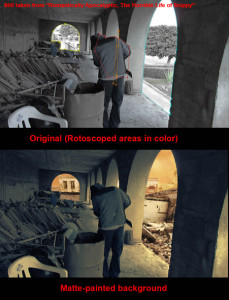 subjects on a completely different background than they were filmed on. Commonly known as matte painting, a matte painting is a movie set alteration in post-production that allows the film maker to create the illusion of a surrounding that is either too expensive to visit or impossible to build.
subjects on a completely different background than they were filmed on. Commonly known as matte painting, a matte painting is a movie set alteration in post-production that allows the film maker to create the illusion of a surrounding that is either too expensive to visit or impossible to build.
The problem with these shots is that you need to separate the subject(s) from the background. This is achieved in one of two ways; Either filming the subject on a green screen or rotoscoping it (Rotoscopy is a film making technique that allows you to cut your subject out of the shot).
This entails that your film making crew MUST have a green screen and lights lying around somewhere, which makes the background alterations easier to do or that your VFX artist will spend countless hours painstakingly cutting your subject(s) or background elements out of the shot. As I found out the hard way, this will slow down and stall your production for days or even months.
2. ENHANCE! One of the biggest pet peeves of a digital graphic artist is to work with a tiny little graphic that has to be blown up 10 times its original size to fit larger footage. It’s just not going to happen, no matter how hard you wish for it. Bitmaps are comprised of little squares, each square is called a “pixel”. Now, if you have an image of 200 square pixels and blow it up to 2000 square pixels, the only thing that will happen is that you are going to end up with a mosaic. Sadly, it just doesn’t work like in CSI, where they take crappy CCTV footage and magnify it 200 times to find the reflection of the killer on the victim’s glasses. What the artist does in real life is basically recreate the original and sometimes there isn’t even enough information in the graphic to do that.
With that in mind, while writing a shot, be aware of the size of your footage and the assets you are planning to add to the shot, it’s not like you can go back to film it again.
3. We’ll just CGI it later. For the low budget film maker CGI should be a last resort, not an all-purpose-fix for 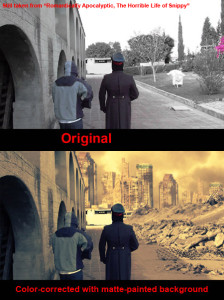 everything. Contrary to popular belief, CGI will not make your film more awesome awesome. In fact, in some cases, it may make it laughable. CGI is a tool. It’s perfect if you want to add bullet holes that will appear for a short time on camera, blood squibs, pyrotechnics or muzzle flares (although ideally, you want to get these done on camera too) but when you try to go overboard and add creatures, vehicles or collapsing buildings, you better be prepared to get a good artist. Think about it this way: Even big Hollywood productions pull incredibly bad CGI effects, what makes you think that you won’t without a massive team of artists working for you?
everything. Contrary to popular belief, CGI will not make your film more awesome awesome. In fact, in some cases, it may make it laughable. CGI is a tool. It’s perfect if you want to add bullet holes that will appear for a short time on camera, blood squibs, pyrotechnics or muzzle flares (although ideally, you want to get these done on camera too) but when you try to go overboard and add creatures, vehicles or collapsing buildings, you better be prepared to get a good artist. Think about it this way: Even big Hollywood productions pull incredibly bad CGI effects, what makes you think that you won’t without a massive team of artists working for you?
4. Rain, fog and atmosphere. Although some of these will look awesome without much work, more often than not, adding them in post production will just look lazy and unprofessional. The world is three-dimensional and so are your effects. Atmospheric effects surround your subject(s). This means that you will probably have to either green screen or rotoscope them out to make them convincing. They build up over distance and perspective plays a vital role here. The farther away your movie set goes, the denser will be your effect. Fog will appear whiter and thicker in the background than it does in the foreground, rain drops will be more closely packed, etc. Adding these in post-production is just not as easy as many of us would like, and certainly can’t just be achieved convincingly by overlaying the asset of your choice on top of your footage.
5. Movement. Movement is your enemy when you want to add VFX to a shot on a budget. Depending on your aperture, shutter speed and ISO you will get motion blur, which will make tracking objects in the shot very difficult. But of course, not all is lost; Your director of photography can shoot these at a high shutter speed and minimize the motion blur. It actually makes it even more realistic when you match the original footage’s motion blur in your CGI but you still have to track the camera and the objects in the shot, which can be time-consuming.
Tracking points will need to be added to the objects and sometimes to the set too. In some cases the motion blur makes them almost invisible.
Now, this doesn’t necessarily mean that shots with motion blur are completely forbiden, but the more of it there is, the more difficult it’ll be to track the camera movements and the objects in it.
Remember, a locked camera shot is boring, but will save you days in post-production. Use VFX on moving camera shots only if it’s absolutely necessary or the story calls for it.
6. Lights, camera, ACTION! Light plays an essential role in all of this.Depending on the camera you choose, your footage may not have enough information to work with. Either too much or too little, once you reach one of these two extremes your footage will have “dead areas”.
You can’t brighten or darken it up in post-production, because the brighter or darker it is, the less colors you have to work with. There is nothing whiter than white nor blacker than black.This is just as bad as grainy or blurry footage and will be a pain to work with so be aware of your light situation while writing a scene that happens at night or with the sun facing the camera.
7. Creature Effects and digital makeup. Let’s face it, makeup, animatronics and creature suits can be 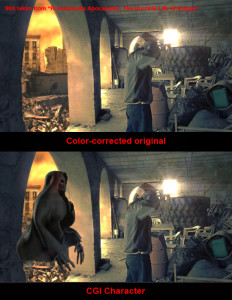 overwhelmingly expensive or unconvincing, sometimes it’s better to add them in post-production than as practical effects.
overwhelmingly expensive or unconvincing, sometimes it’s better to add them in post-production than as practical effects.
But sometimes the time you spend doing the visual effect is not worth it. It still looks cheap. So before creating that monster you want, ask youself: Who is more skilled, Your VFX artist or your special effects artist? If the answer is neither, you might as well just use a shadow or make the action happen off camera.
8. But…How? At this point you might be asking yourselves, all that is fine, but I don’t know any VFX artists. Google is your friend. And so is YouTube. Search for tutorials, Google for visual effects artists, look for film making boards, nowadays there are VFX artist just about everywhere. VideoCopilot.net is a really good resource for beginners and intermediate users alike, I highly recommend it. Also, Indy Mogul and Film Riot on YouTube, both offer tutorials and how to’s on how to achieve VFX shots.
This doesn’t mean you should avoid these shots altogether, but be aware of your own budgetary and time limitations while writing the scenes. Use the visual effects sparingly and be okay with your shot not necessarily looking like a big Hollywood blockbuster. Sometimes it takes a bit of suspension of disbelief to watch a film.
As stated above, visual effects take time and money to achieve, but just how much of them should you put into your production? Think of visual effects as candy; Eyecandy. You don’t want to spoil your viewers with too much of it or it’ll give them an indigestion. Of course there are shots that require them to work, like adding content to otherwise un-viewable or blank computer and TV screens in your shot or CGIing-out things that were not supposed to be in it such as cables or production equipment but aside from that, adding too many not only is going to be expensive or time-consuming but will also make it look inferior.
In this day and age VFX are easier to produce than ever but that doesn’t mean you will have easy access to professionals who deserve to be working for Industrial Light and Magic or Digital Domain. More often than not, your VFX artist will have his or her own limitations and cramming your film with visual effects that are not completely seamless, will only make it look unprofessional.
* * *
[You can see more examples of the author’s VFX work at https://www.youtube.com/redcrowdesign.]


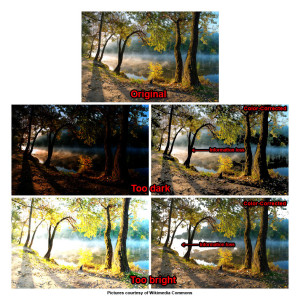


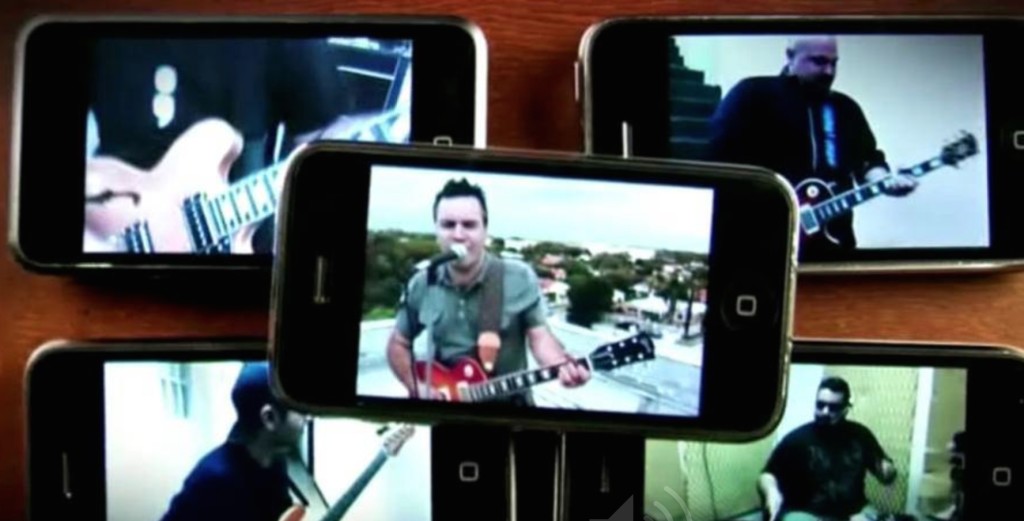 Previous post
Previous post
 Next post
Next post





